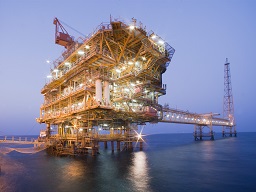Corrosion and Materials Testing
Lloyd Alman has autoclave facilities and a large scale vessel suitable for intensive and long term testing for corrosion resistance of materials subjected to sour and corrosive environments, for example gaseous and liquid mixtures involving H2S or CO2.
Autoclaves for High Pressure Corrosion Testing
Spadeadam has a total of 5 autoclaves with capacities of 5, 10 and 15 litres. All can be used for static corrosion testing of pipeline or tubing samples with electrochemical measurements of corrosion to give real time corrosion rates in mm/year. Lloyd Alman also has the capability to carry out dynamic corrosion testing in the 5 and 10 litre autoclaves.
All autoclaves can be operated at pressures up to 345 bar (5000 psi) and temperatures up to 280 C. An erosion/corrosion rig can also be fitted to a 10 litre autoclave to allow samples to be subjected to a continuously flowing fluid acting on its surface.
All the autoclaves can be operated to provide:
- Elevated pressures or a dynamic pressure cycle
- Elevated temperatures or a dynamic temperature cycle
- Gaseous and/or liquid environments as specified by the customer, including toxic gases such as H2S
Ambient Pressure Corrosion Testing
Pressure Corrosion testing can be undertaken where real-time corrosion rates can be measured using computer cotrolled LPR (Linear Polarisation Resistance) and EIS (Electrochemical Impedance Spectroscopy) corrosion monitoriing equipment.
Full Ring Testing
Facilities exist that enable full ring testing of pipeline sections, up to 36″ diameter, including butt welded and seam welded sections. This allows evaluation of hydrogen induced cracking (HIC), sulphide stress corrosion cracking (SSCC), stress oriented hydrogen induced cracking (SOHIC) and large scale containment vessel.
This totally enclosed large scale high pressure high temperature testing facility enables sour gas or corrosive testing of large samples such as pipeline sections (up to 30m long). The fully instrumented samples can be tested under static or flowing conditions with remote process control and data logging capabilities. The release of inventory due to component failure can be safely contained within the vessel.


